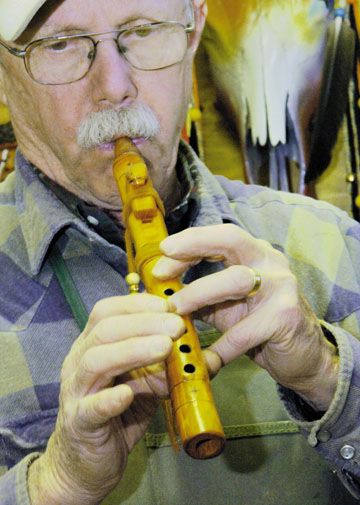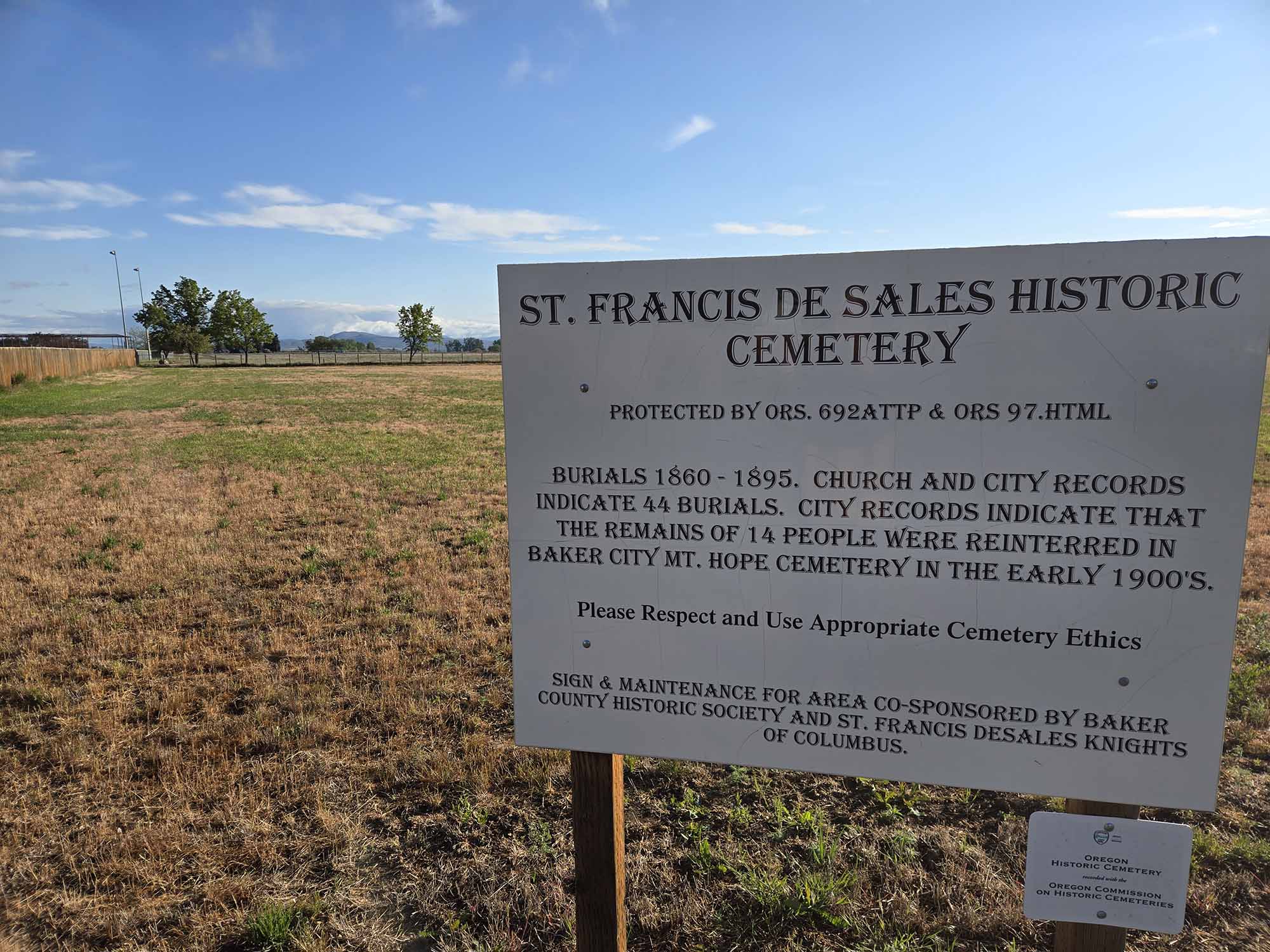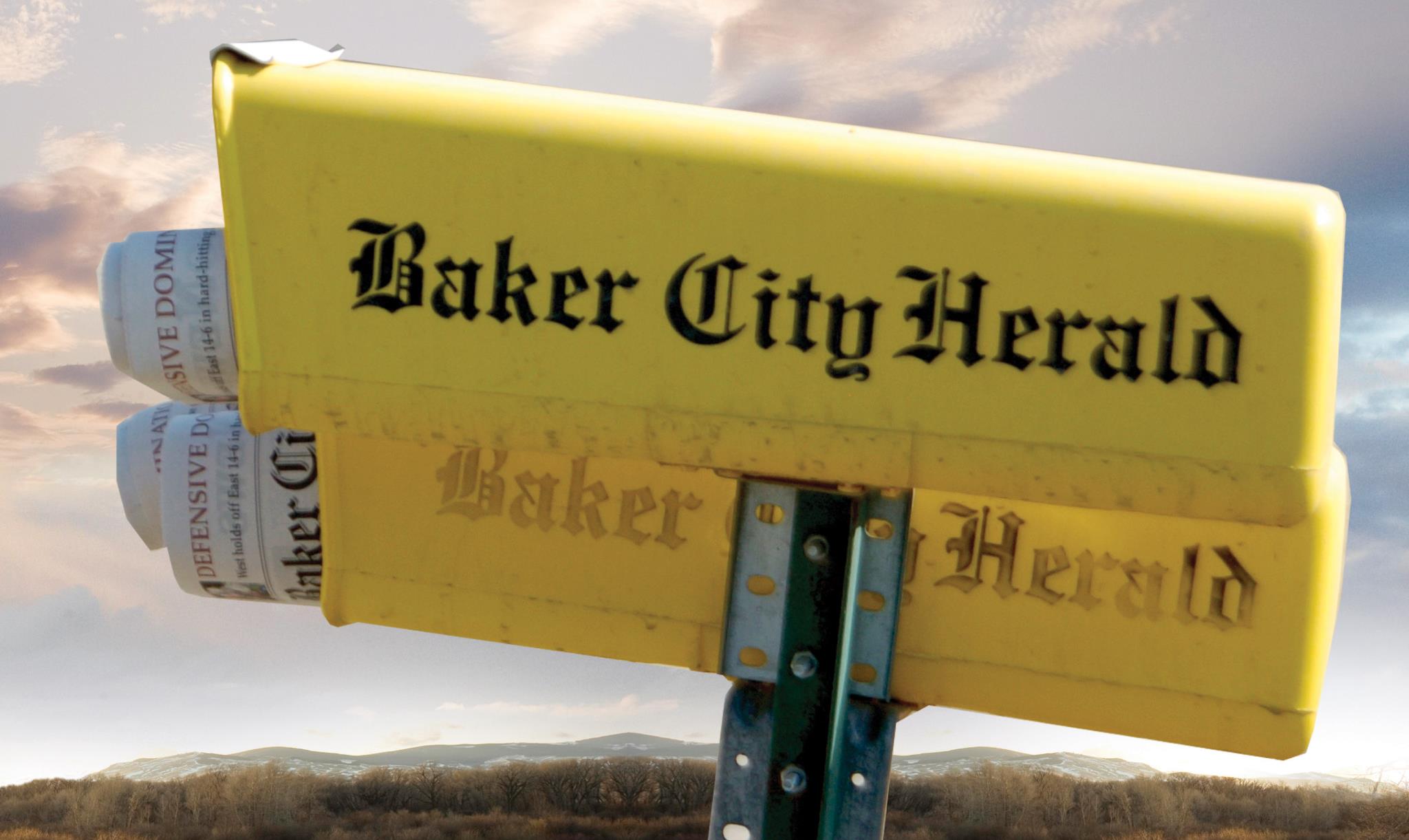Making magical music
Published 3:06 pm Thursday, February 5, 2009

- Dave Clemens plays his flutes throughout all stages of development. His shop is full of flutes of varying lengths and diameters. All his flutes have a different voice. (Baker City Herald/S. John Collins)
Dave Clemens likes a challenge, especially when he hears someone say they can’t play an instrument.
That’s his cue to sort through his flutes and find the perfect fit.
Then he holds out the instrument and gives a quick lesson: cover the six holes with your fingers and blow into the mouthpiece.
And he doesn’t even grimace when the resulting sound is more squeak than music.
A slight adjustment, and in a few minutes a sweet sound floats from the flute.
He smiles, then brings his own flute to his lips and plays a haunting song.
Across this space, in the lower level of Crossroads Carnegie Art
Center, four other flute players play songs – from their memories, from
their hearts, from their souls.
There’s not a sheet of music in sight, yet every flute sounds in perfect harmony with the others.
“That’s the magic,” Clemens says.
Clemens, 71, began building Native American-style flutes about five years ago.
Today, in a shop outside his Richland home, a couple hundred sticks wait to become musical instruments.
“I’ve built hundreds of flutes,” he says.
He uses elderberry wood, readily available in the Snake River country near his home.
“The elderberry was probably one of the earliest materials native people used,” he says. “It’s known as the ‘tree of music.’ “
In the past five years Clemens has researched the cultural music traditions of North American tribes.
And this man, who has no Native American ancestors, has a great respect for native culture and the art of making flutes.
“The native flutes are special,” he says. “I always credit the flute to the native people.”
In his travels to shows, gatherings and fairs, Clemens has visited with many other flute makers – he’s traded flutes with some, and he’s bought flutes from others. He always, he says, encourages people to support the native builders.
Phillip Charette of Baker City fits that category – he is an Alaskan Native, and he builds both wood and clay flutes. Charette is heavily involved at Crossroads Carnegie Art Center, and last year started the Eastern Oregon Flute Circle gathering on the fourth Tuesday of each month. Clemens attends every one (as long as Highway 86 is passable).
The flute circle meets from 6 p.m. to 8 p.m. in the downstairs studio at Crossroads, 2020 Auburn Ave. Anyone interested in learning more about Native American-style flutes and flute playing is welcome – the only requirement is to be a member of Crossroads. (Membership: $25 individual; $40 family; $15 students and $20 seniors.)
The circle is designed to connect fellow flute players and learn more of the tradition behind the music.
“The most important thing to do when you’re playing is to feel it,” Charette says. “The more emotion you have, the better your song will be.”
And now, back to Clemens’ shop, which was a gift to him from his wife, Sue.
“She didn’t have any idea I’d live out here,” he says with a smile.
He didn’t do much woodworking before his foray into flutes, and he didn’t have experience with instruments, either.
But that’s the beauty with this type of flute – it’s fairly easy to make and pretty easy to learn.
He begins with a dead and dry branch of elderberry. He never cuts green wood to season.
“It just doesn’t sound right,” he says.
Elderberry has a soft center that’s easy to hollow out – he uses a drill with a 3/4-inch spade bit.
Most books for building flutes recommend splitting the wood, removing the heart and then gluing it back together. Clemens prefers keeping the wood intact.
“The technique I use I’ve just had to develop,” he says.
He didn’t keep any of his first attempts.
“I wish I had,” he says. “I think they ended up in the burn barrel.”
After he taps out the sawdust, Clemens peels the bark and sands the wood smooth.
Then, even though it is is just a hollowed out stick, he makes music.
“Before I put in any holes at all, that wood has a fundamental note. That’s the voice,” he says.
Next he examines the piece for balance.
Every flute must have a “nest” for two rectangular holes – the first is the air exit hole and the second is the true sound hole.
Clemens carves these holes, then forces a cork inside – a very tight fit – between these two spaces to block and direct the air.
He uses leather cord to tie a carved totem (also called a fetish) over the air exit. A carved channel on the bottom of the totem forces air from the exit hole over a bridge – some air escapes and some is forced down into the true sound hole and sound chamber.
After each tweak, Clemens blows into the flute to test the sound. An electronic tuner reveals the note.
“Will this stick of wood have a voice? And at what length?” he says.
Flutes with a large diameter have a deep voice and small flutes are high-pitched.
Next come the six tuning holes a player uses to make different notes. He uses a pentatonic scale.
He measures these holes – five inches from the end and 1 and 1/16 inches apart. He makes a small hole with a hand drill, then increases the diameter using steel rods heated on a propane burner.
After each burning, he raises the flute to his lips and smoke floats out with the note.
He starts with small holes, which he can enlarge to adjust the sound.
“You can’t go back,” he says with a smile.
This flute’s voice comes without too much fuss.
“Sometimes they’ll really tune well, and sometimes they refuse to talk to you,” he says. “And sometimes, if it sounds good to your ear, that’s okay.”
After making the holes, Clemens decorates the flute using native symbols and colors. Then he finishes with several coats of sealer.
Though elderberry is his favorite to work with, Clemens experiments with pretty much anything he can hollow.
He even has two flutes made from Scotch thistle – especially appropriate since it is a listed noxious weed and he still works part-time spraying for the Baker County Weed District.
“I get fascinated with anything I can make a flute out of,” he says.
But when you see Clemens, be it at the flute circle or in a booth at the Haines Fourth of July celebration, he will have his elderberry flutes.
And he will entice you to play.
“There’s something magical about the sound,” he says.





